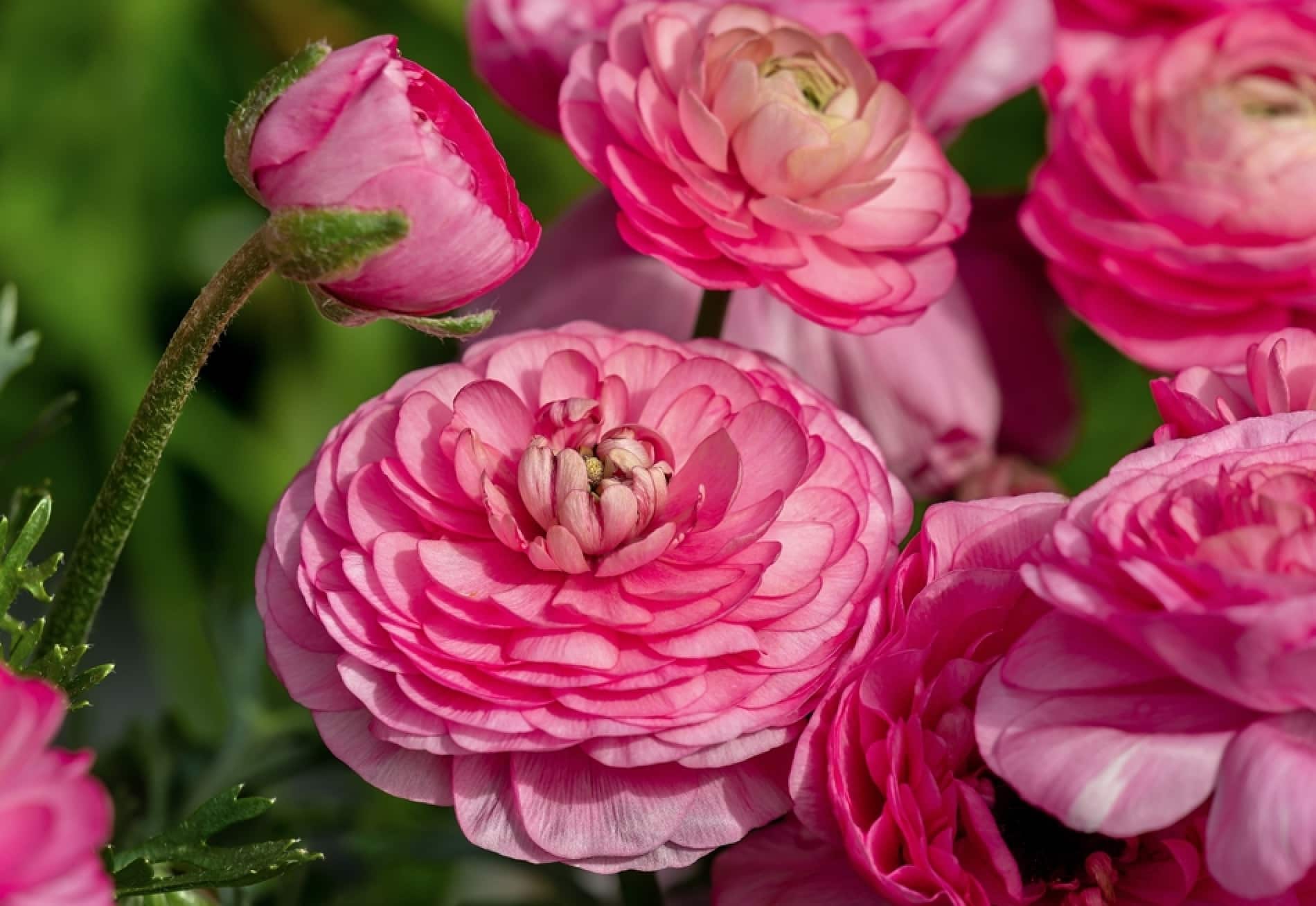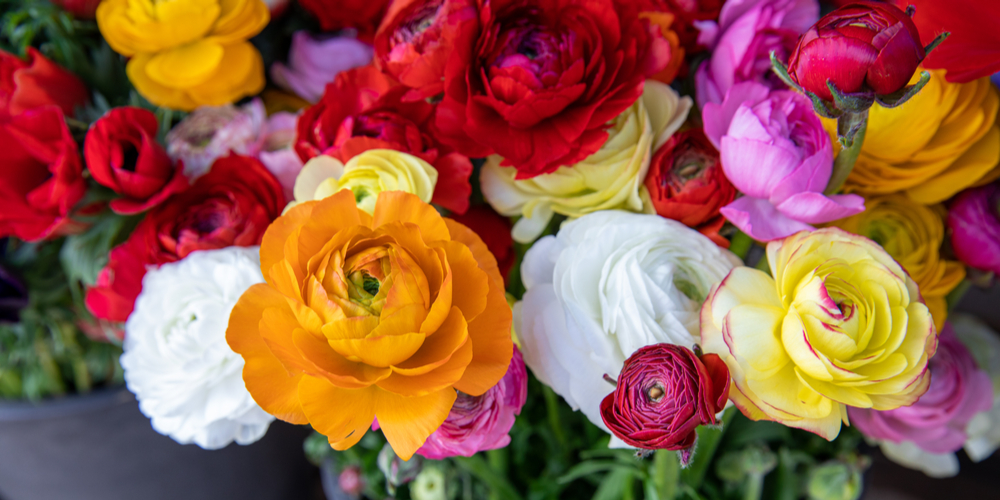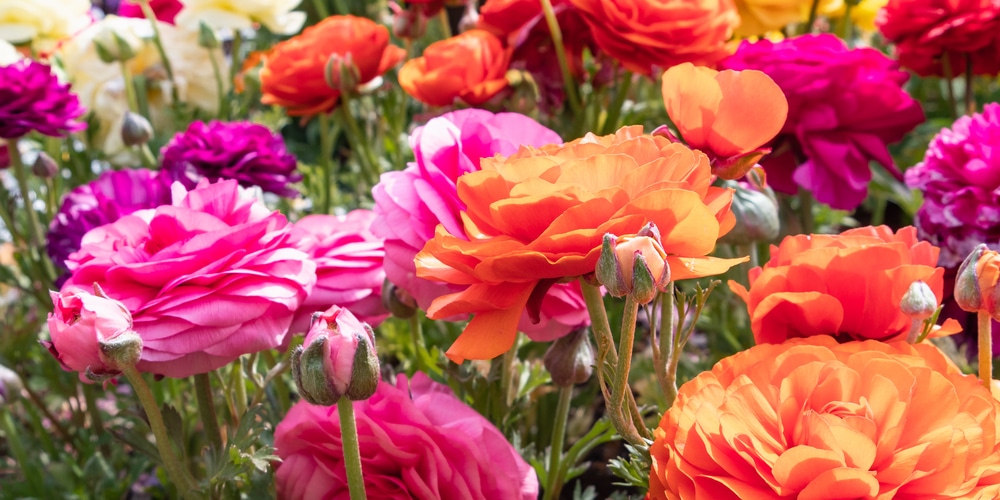| Question | When to Plant Ranunculus Bulbs? |
|---|---|
| Answer | Cooler climates: Early spring. Warmer climates: Fall. |
| More Info |
|

- In cooler climates (USDA Zones 4-7): Plant ranunculus corms in early spring, as soon as the soil is workable and the threat of hard frost has passed. In these zones, it’s also possible to start the corms indoors in late winter and transplant them outside after the frost danger has subsided.
- In warmer climates (USDA Zones 8-10): Plant ranunculus corms in the fall, around October to November, for blooms in late winter to early spring. In these regions, the cooler winter months provide the necessary cold period for ranunculus to develop and bloom properly.
Before planting, soak the corms in water for about 3-4 hours to encourage growth. Ranunculus prefers a sunny location and well-drained soil. In areas with heavy soil, consider raising beds or using containers to improve drainage.
Understanding Ranunculus Bulbs
Ranunculus bulbs, often referred to as corms, are the foundation from which these vibrant flowers grow. These corms are essentially the storage organs that hold nutrients and energy required for the growth of ranunculus plants.
The anatomy of a ranunculus bulb sets it apart from true bulbs, such as those of tulips or daffodils.
Storage and Dormancy: Ranunculus bulbs enter a period of dormancy after their flowers and foliage have died back. As with many flowering plants, this dormancy is crucial, as it allows the plant to survive adverse conditions, typically cold winters.
Size and Planting Depth:
| Bulb Size | Planting Depth |
|---|---|
| Small | 2 inches |
| Large | 3-4 inches |
Orientation: When planting, ensure the claw-like part of the corm is facing downwards and the pointed tip is upwards. This ensures that the corm is correctly positioned to sprout and grow as efficiently as possible.
Soil Conditions: Gardeners should plant their ranunculus bulbs in well-draining soil. Proper drainage is essential to prevent bulbs from rotting.
The incorporation of organic matter can improve soil conditions, allowing for better growth.
It is also worth noting that ranunculus bulbs thrive in pots, with the basic requirements remaining similar: a well-draining medium and appropriate spacing for the corms to expand.
Optimal Planting Times for Ranunculus
To ensure the successful growth and vibrant blooms of ranunculus, one must adhere to specific planting times. These are chiefly influenced by regional climates and seasonal weather patterns.
Regional Variations
Warmer Climates (USDA Zones 8-11):
- Fall Planting: It is ideal to plant ranunculus bulbs in the fall, specifically around October or November. This timing allows the bulbs to establish roots before the winter, leading to early spring blooms.
Colder Climates (USDA Zones 4-7):
- Spring Planting: Gardeners should wait until the threat of frost has passed before planting ranunculus bulbs. This typically falls in early spring, which results in summer blooming.
Seasonal Considerations
- Fall: Planting in the fall is preferred in warmer USDA zones to capitalize on the cooler dormant period.
- Spring: In colder USDA zones, spring is the best time to plant once frost danger is over; this allows the ranunculus to thrive in the warmer growing season.
Preparing for Planting
Before planting ranunculus bulbs, gardeners need to ensure that the soil is well-prepared and that the bulbs have been treated properly to encourage successful growth.
Soil Preparation
Rich, well-draining soil is imperative for healthy ranunculus growth.
Gardeners should aim to work the soil to a depth of about 8-10 inches, incorporating organic matter such as compost to enrich the soil.
Soil testing is recommended to check for pH levels; ranunculus thrives in a pH range of 6.0 to 7.0.
To ensure proper drainage and avoid rot, one can mix horticultural grit into the loam-based soil at a ratio of approximately 20 percent.
Bulb Treatment
Before planting, ranunculus corms benefit from a soaking process.
Submerge the corms in water for 4 to 6 hours to hydrate them, which will encourage root development once planted.
When handling the corms, it’s important to identify the claw-like part, as this end should face downward when placed in the soil.
After soaking, plant the corms at a spacing of 4 inches apart to allow ample growth room, with a covering of about 2 inches of soil over the top.
The Planting Process
Planting ranunculus bulbs correctly is crucial for a flourishing display. This section provides guidance on the ideal planting depth and spacing, as well as best practices for watering and fertilization.
Planting Depth and Spacing
For optimal growth, ranunculus bulbs should be planted at a specific depth and spacing. This ensures adequate room for development and proper access to soil nutrients.
- Depth: Plant bulbs 2-4 inches deep
- Spacing: Space bulbs approximately 4-6 inches apart
Note: If bulbs are particularly large, a depth of 3-4 inches is preferable.
Watering and Fertilization
After planting, ranunculus bulbs require consistent moisture and nutrients to thrive.
- Watering: Initially, water thoroughly to settle the soil around the bulbs. Thereafter, keep the soil slightly moist but not waterlogged.
- Fertilization: Use a slow-release fertilizer at the time of planting to provide steady nutrients as the bulbs grow.
Post-Planting Care
After planting ranunculus bulbs, it’s essential for gardeners to provide the right conditions for growth and to protect the developing plants from pests and diseases.
Growth Monitoring
Monitoring the growth of ranunculus involves ensuring the soil remains lightly moist without becoming waterlogged.
Irrigation should be done in moderation; overwatering can lead to rot.
Once shoots appear, providing a balanced liquid fertilizer every two weeks can promote healthy growth.
Additionally, gardeners should ensure the plants receive full sunlight for at least 6 hours a day.
Pest and Disease Management
The management of pests and diseases begins with the act of inspection.
Regularly checking for signs of trouble, such as discolored leaves or the presence of insects, is crucial.
Common pests include aphids and spider mites, which can be controlled using insecticidal soap.
For diseases like powdery mildew or root rot, improving air circulation and reducing excess soil moisture are effective preventative measures.
If diseases do appear, applying a suitable fungicide may be necessary.
Frequently Asked Questions
This section provides answers to common questions about planting ranunculus bulbs, addressing topics from timing and methods to specific zone considerations and expectations for growth and reemergence.
What is the optimal time of year to plant ranunculus corms?
The optimal time to plant ranunculus corms is in the fall in USDA zones 8-10, as they can establish roots and be ready to bloom in early spring. In USDA zones 4-7, gardeners should wait until spring to plant or consider pre-sprouting indoors.
How should ranunculus bulbs be planted in containers?
When planting ranunculus corms in containers, presoak them for four to six hours to encourage growth.
They should be planted with the claws facing downward, spaced about 4 inches apart, and covered with 2 inches of well-draining soil mix with added horticultural grit and slow-release fertilizer.
Which growing zone is suitable for planting ranunculus in the ground?
USDA zones 8 and above are suitable for planting ranunculus directly in the ground in the fall. These corms can withstand mild winters and will bloom in the spring. Gardeners in zones 4-7 should take precautions against freezing temperatures.
Can ranunculus be expected to bloom during their initial growing season?
Ranunculus planted at the correct time for their zone can be expected to bloom in their initial growing season.
Planting in the fall allows for early spring blooms in suitable zones, while spring planting will result in late spring or early summer flowers.
Are there any special requirements for planting ranunculus in zone 6 or 7?
In zones 6 or 7, ranunculus corms face potential winter damage and should be planted in spring or be provided with winter protection if planted in the fall.
Mulching and choosing a sheltered planting site can help protect the corms from frosts.
Is it possible for ranunculus to reemerge in subsequent years?
In warmer climates such as USDA zone 8 and above, ranunculus may reemerge in subsequent years if they are planted in well-draining soil and not subjected to overly wet conditions.
In colder zones, they are typically grown as annuals but can sometimes return if they are well-protected over winter.
Last update on 2024-04-29 / Affiliate links / Images from Amazon Product Advertising API




